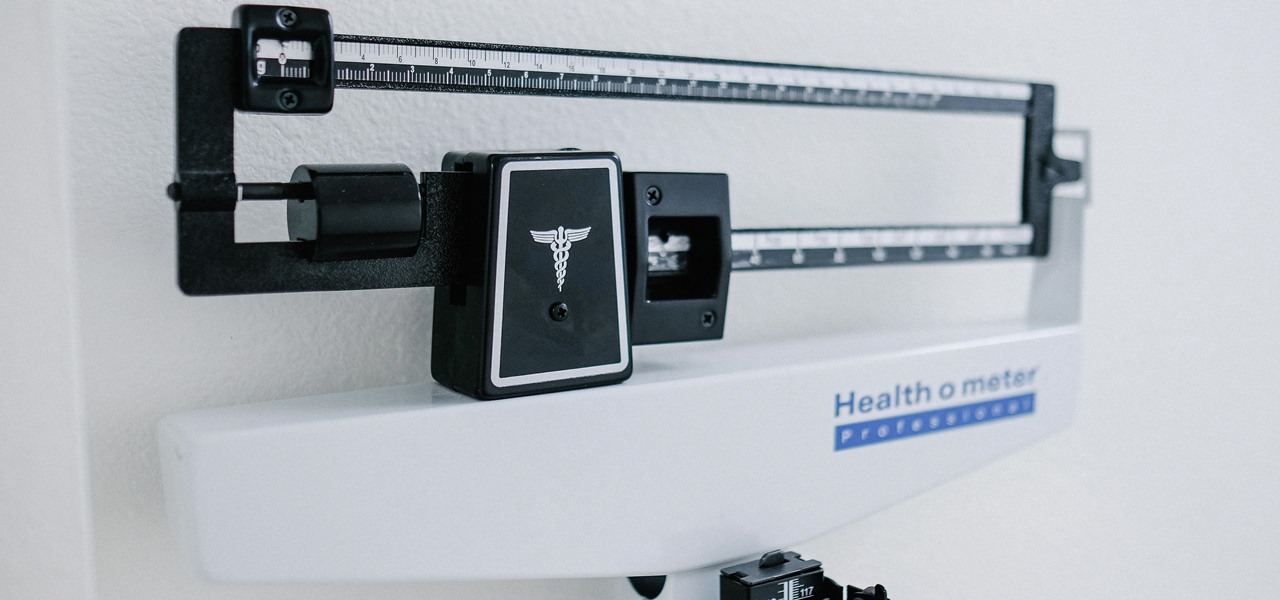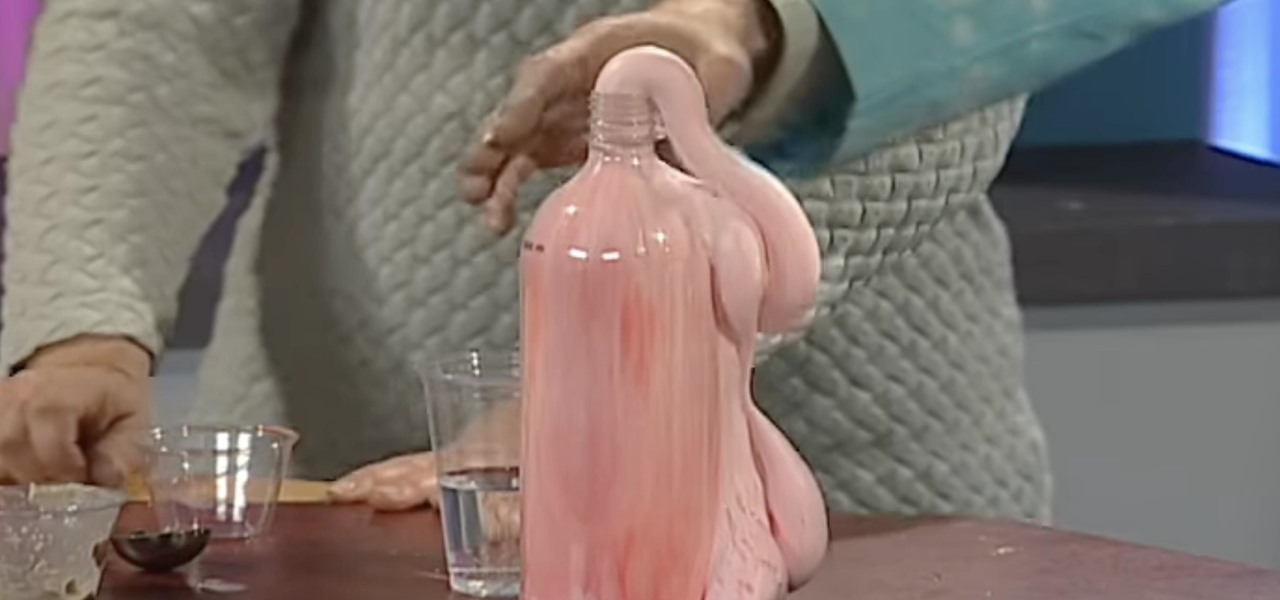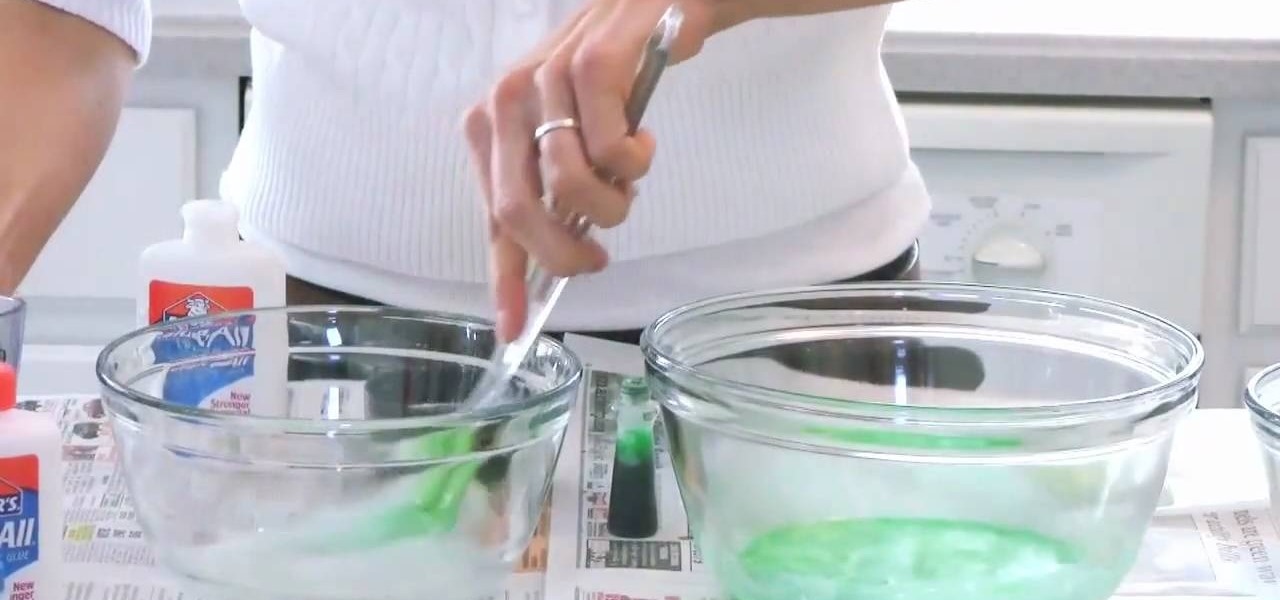Hot Science Experiments Posts

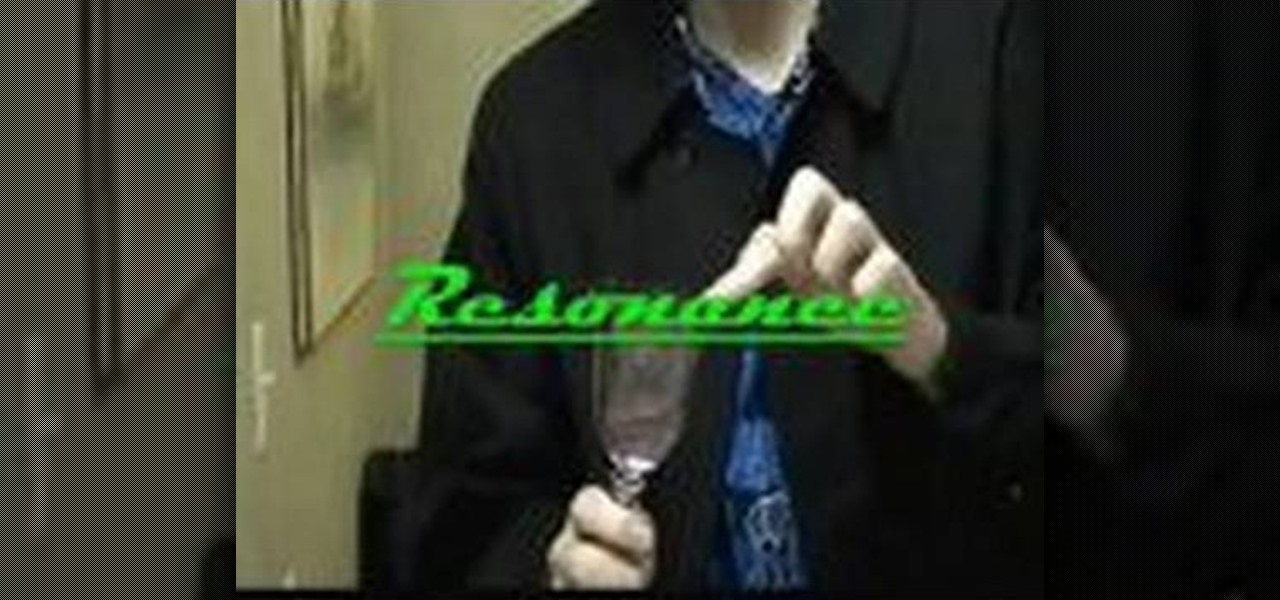
How To: Understand resonant frequencies
In this video tutorial the instructor demonstrates resonant frequency. In this video the instructor shows the sound of resonance and how to generate it. Resonance is a forced vibration of energy into molecules of an object that makes those molecules vibrate at their resonant frequency. When these molecules vibrate naturally they produce a kind of noise that can be annoying some times. In this video the author makes a small object using a rubber band and a net that produces vibrations when rot...

How To: Understand how sodium nitrate burns
Ever wondered how science could turn out to be fun? Here's how: take a piece of paper with a mixture of sodium nitrate and sugar. When heated, sodium nitrate releases oxygen and burns sugar. Sugar alone cannot burn fast. If you want faster results, then take sodium nitrate with sulphur and some reactive metals. Add some coal to it for a faster result. This will help you burn some useless pile in quick time.
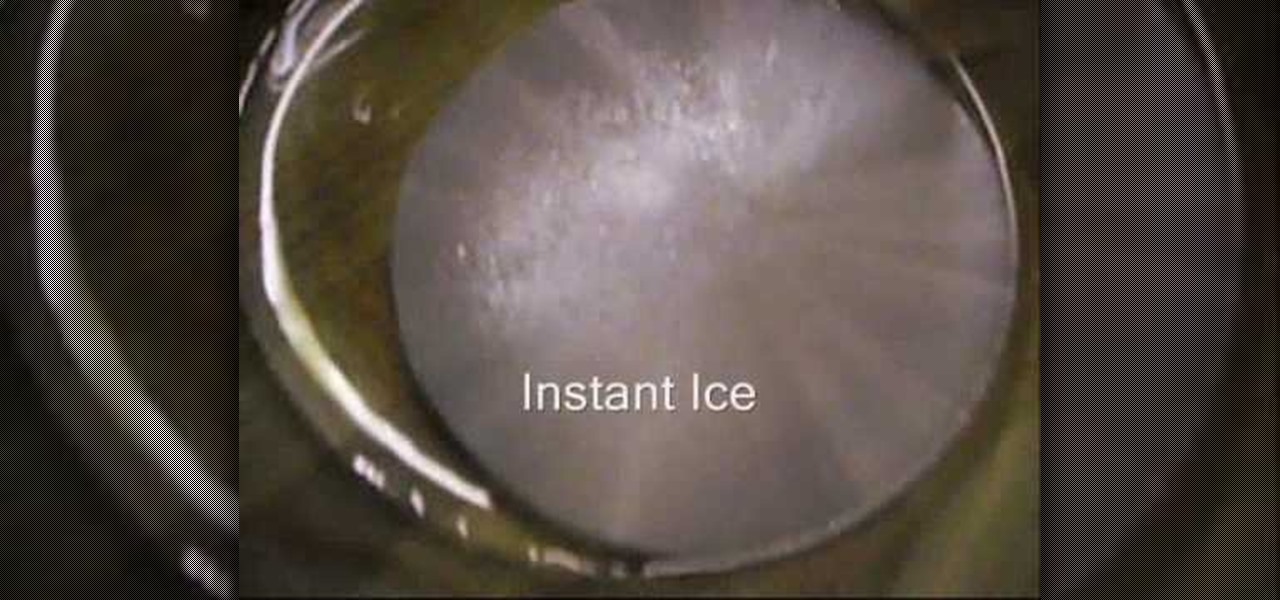
How To: Make simple and fun "hot ice" at home with vinegar
Hot ice is a very cool experiment. This is a recipe for homemade 'hot ice' that mimicks the sodium acetate one but only requires simple ingredients!
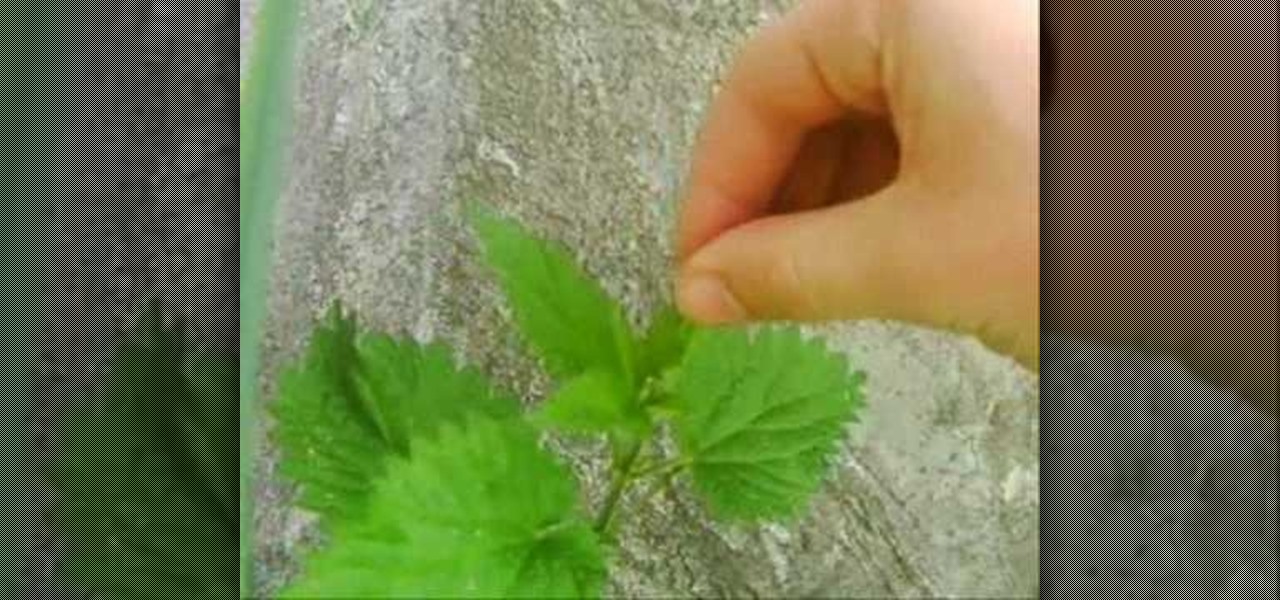
How To: Eat stinging nettles without stinging yourself
If you like to eat stinging nettles, there is actually a way to do it without stinging yourself, and this video will show you a very simple trick. Take the leaf between your thumb and forefinger and stroke it away from the stem of the plant a few times, then tear the leaf off. Roll it between your thumb and finger so it forms a cylindrical shape, pop it in your mouth and eat it. It tastes good and you don't get stung. If you've ever been curious about eating stinging nettles, this is the plac...
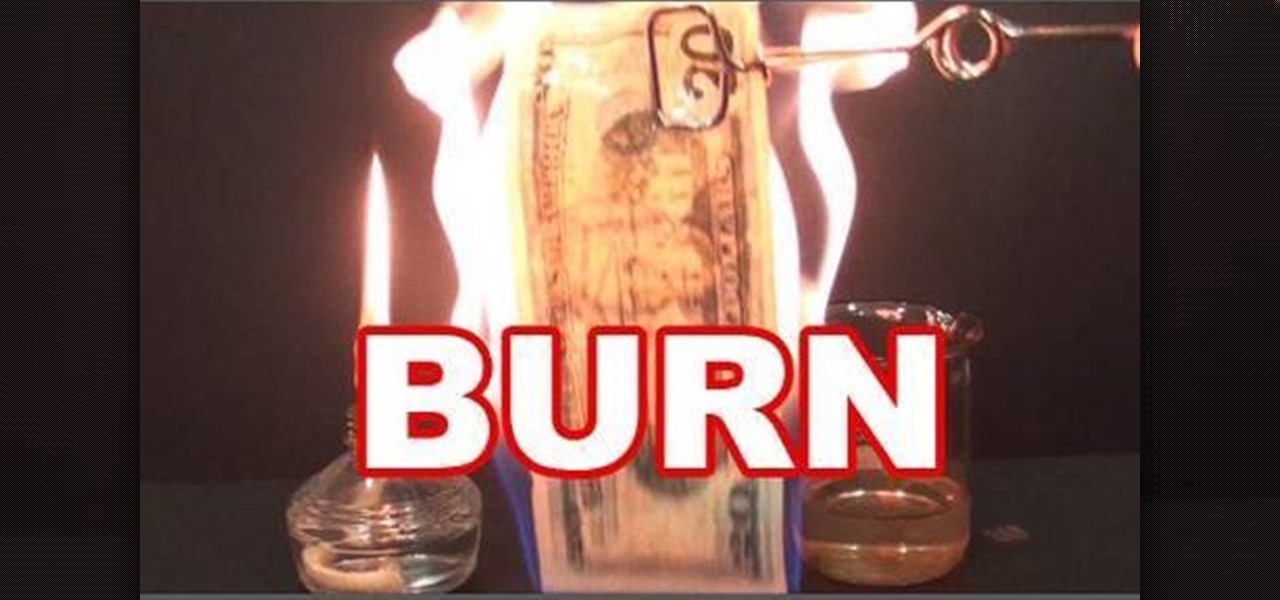
How To: Burn money without damaging it
Evil Dylan takes a twenty dollar bill and sets it on fire, but does not damage the money at all. Materials necessary for this experiment are distilled water, alcohol and a twenty dollar bill. He measures 45ml of distilled water into a measuring cup and then tops it off at 100ml with the alcohol. He then puts the twenty dollar bill into the mixture and soaks it for a while making sure that the bill is totally immersed. Then he sets it on fire and even though the fire burns, the bill is not dam...

How To: Burn mercury thiocyanide, "the rock from Mars"
Students show how mercury thiocyanide or "rock from mars" burns. First and foremost, make sure you are outdoors and with a considerably large space. Spread a non-flammable material over the space you decide to work on and place a small fragment of the mercury thiocyanide in the center. Keeping a respectable distance from the "rock" touch the "rock" with a lighted match. Watch as a substance oozes out from the rock. Make sure that the process has ended or that no movement can be seen from the ...
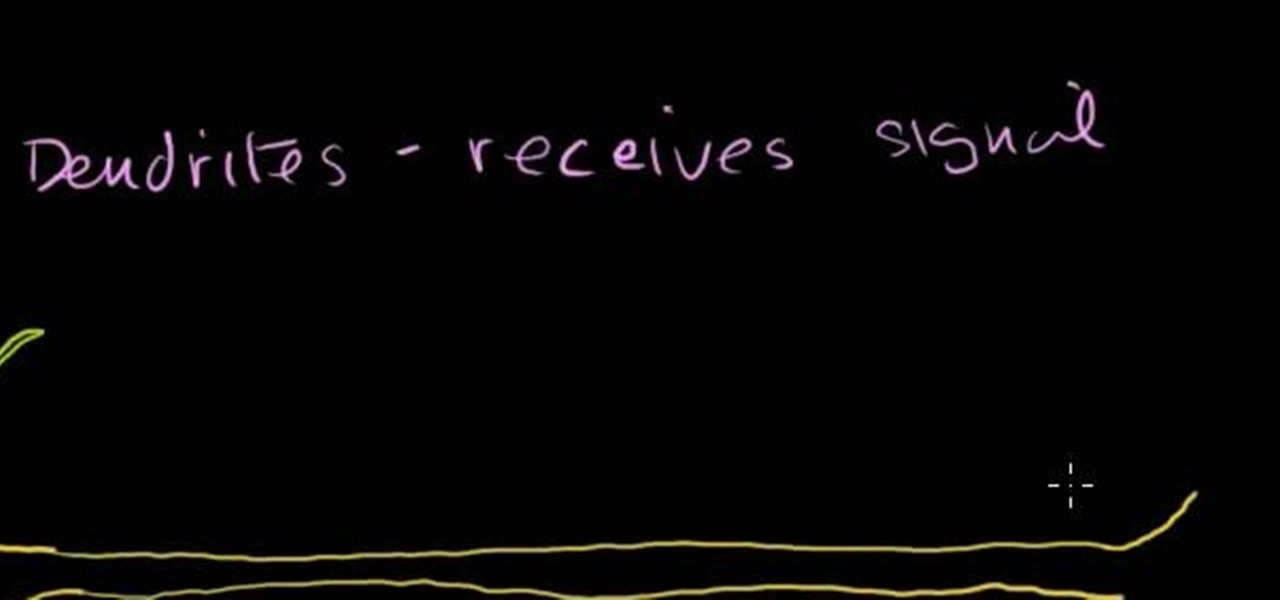
How To: Understand the anatomy of a neuron
The speaker starts out by peaking the viewer's interest in the importance of a neuron. Using a diagram, the speaker helps familiarize the viewer with the anatomy of a neuron. As he draws a diagram of the neuron, the instructor gives a detailed explanation of what the various parts of a neuron do and how each of the various parts interacts with other neurons. The speaker also explains how the neuron sends and receives signals throughout the body. The video is informative, very good quality and...
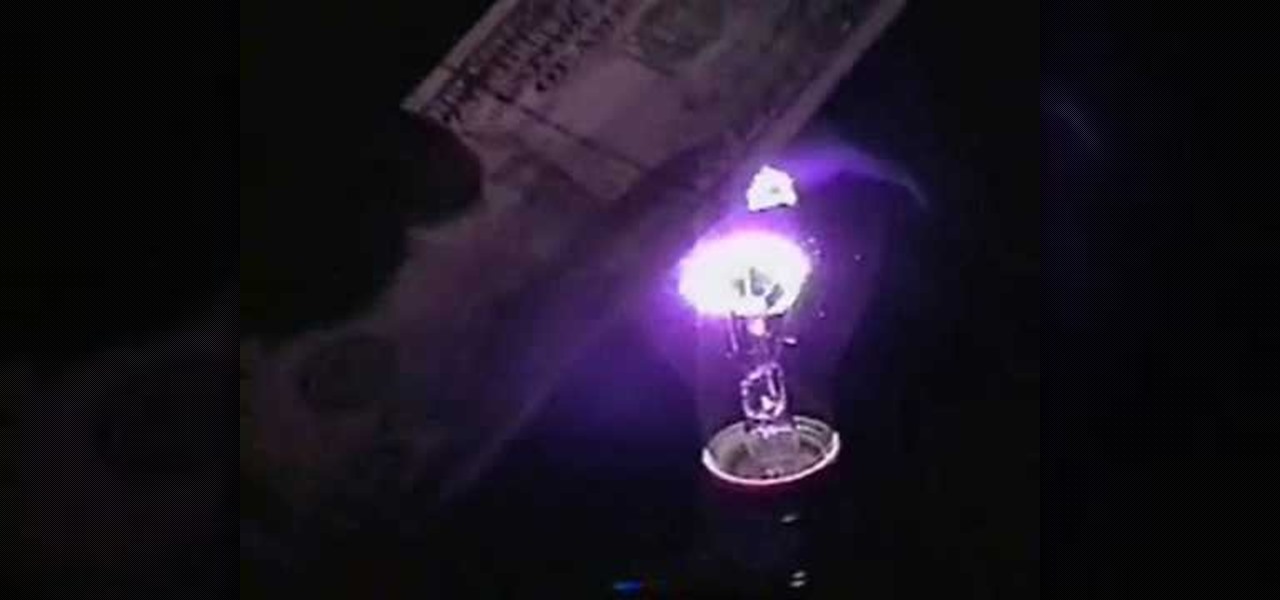
How To: Detect counterfeit money
Look at the money you are receiving. Carefully inspect it for any strange colors, marks, or texture. Do not assume that a different color, texture, or design is simply a mistake made at the treasury. The bills there are all made the same based on the denomination.
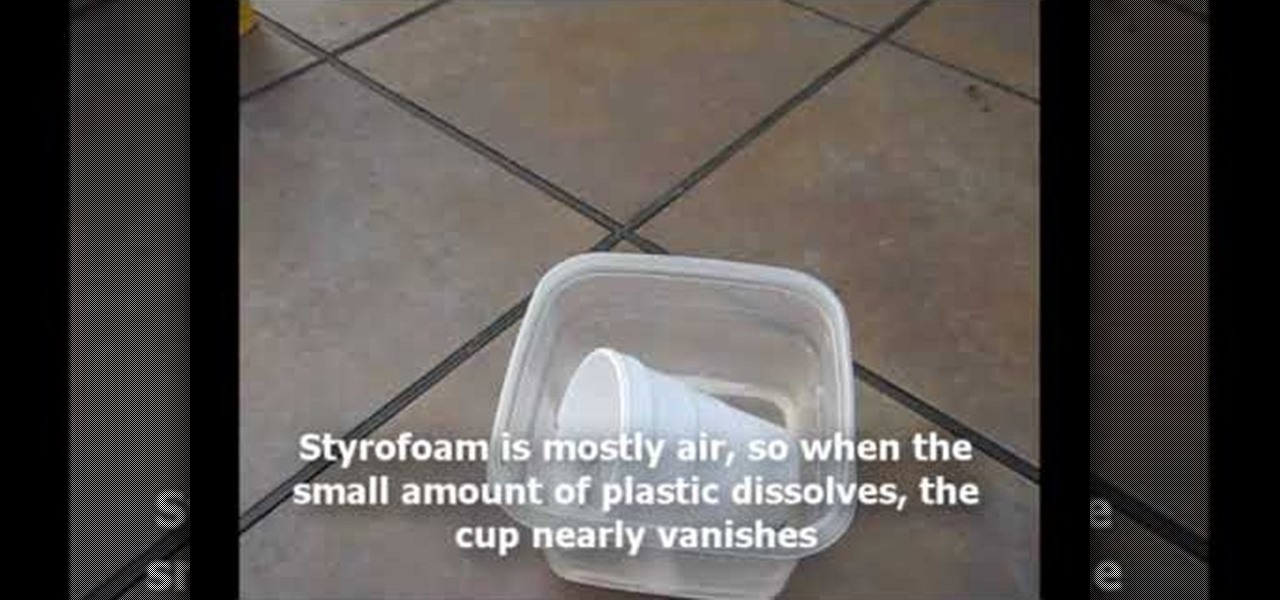
How To: Dissolve a styrofoam cup in acetone
Styropyro shows a classic demonstration of "The Vanishing Cup" experiment. Things you will need: a container, slightly larger than the Styrofoam cup, acetone and a Styrofoam cup. Place the container on a flat surface and fill it up with an acetone. Get the Styrofoam cup and Carefully place it inside the container. Watch the Styrofoam cup slowly shrinks as it touches the acetone. After a while. the Styrofoam cup turns into liquid form. Notice how much of the Styrofoam cup is left after it shri...
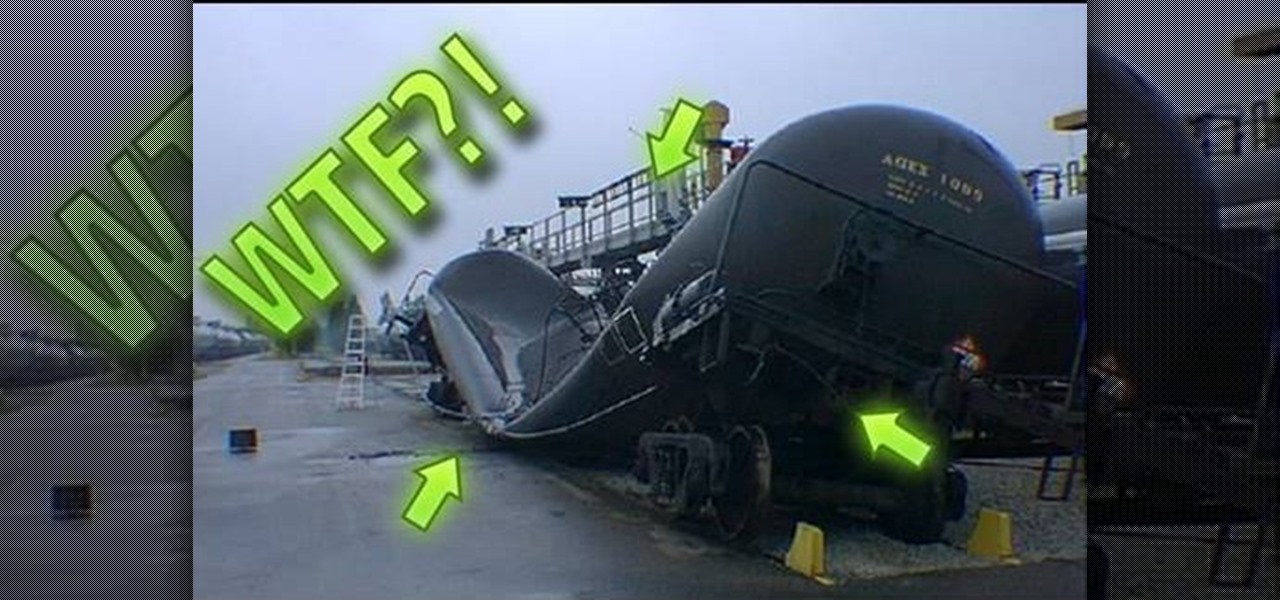
How To: Crush metal with ice water (and air pressure)
Air. It's all around us. Put it to work with this home science how-to, which demonstrates a cool method for crushing aluminum cans with a little bit of ice water and a whole lot of air pressure. To follow along with this experiment at home, you'll need a soda or paint can, a large bowl of water, some ice, and a stove top.
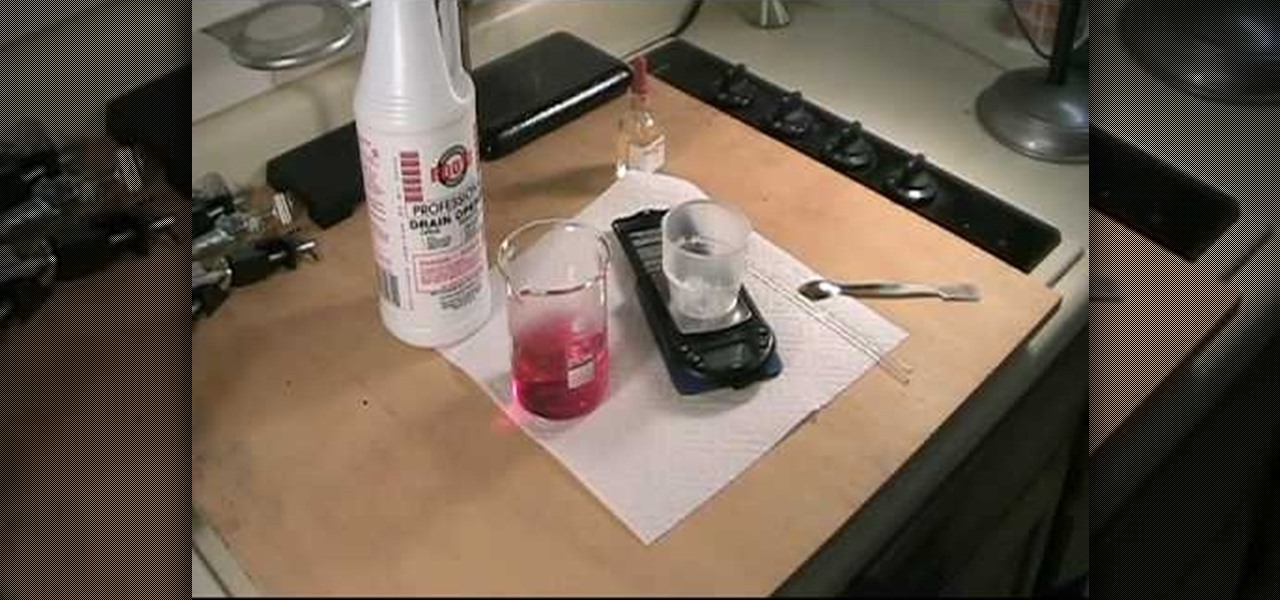
How To: Use gravimetric analysis to analyze sulfuric acid
This video is based on a chemistry experiment. This video is going to explain to us how to use gravimetric analysis in order to analyze sulfuric acid. This experiment should not be done for those who do not have a fundamental knowledge of chemical compounds, reactions and chemical safety. He explains first what he is about to do before he does it. Sulfuric acid is acidic and can be toxic if ingested or in contact with the eyes. Take extreme care with this experiment.

How To: Analyze cheap sulfuric acid for concentration & purity
In this home scientist video the instructor Robert Bruce talks about cheap sulfuric acid. He says that sulfuric acid is very important in any lab both as a reagent and a precursor for preparing other chemicals. He points to the battery acid saying that it is a good source of sulfuric acid which is 35% concentrated. Now he shows various methods to obtained sulfuric acid and shows how to test one of the thus obtained sulfuric acid for its concentration. In this video the author talks about sulf...
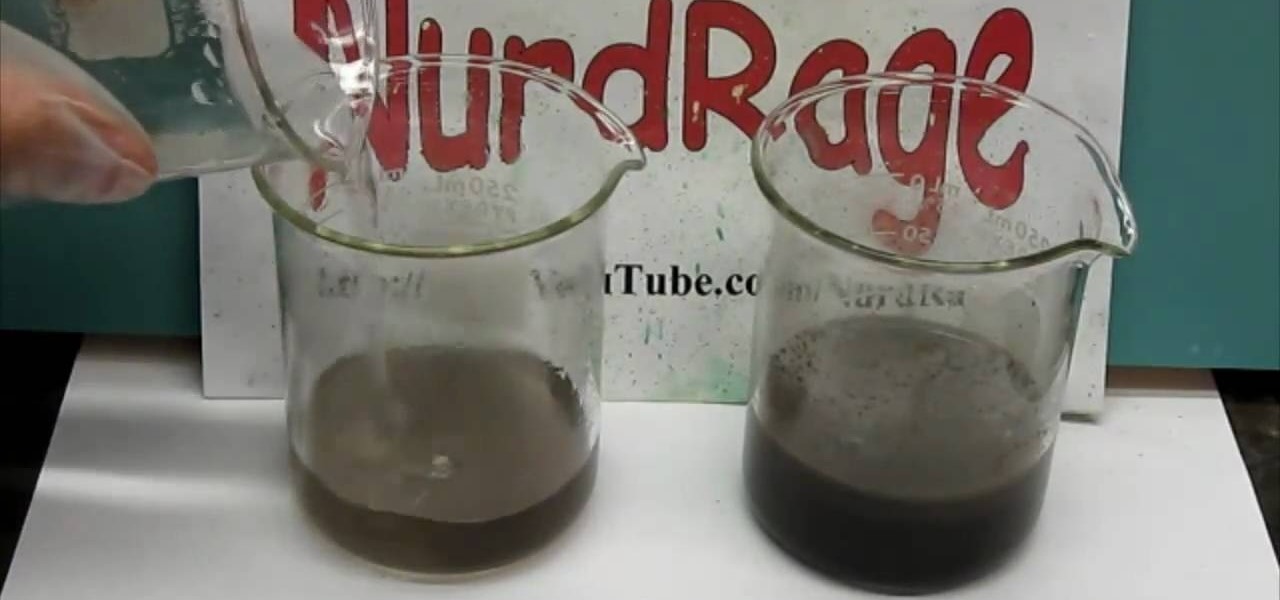
How To: Test manganese dioxide for purity (and sand)
This video speaks to everyone who has ever bought anything online, or in fact, anyone who has ever bought anything period. How do you know what you're getting is genuine? Is it a fake product? Is it stolen goods? Is it impure?
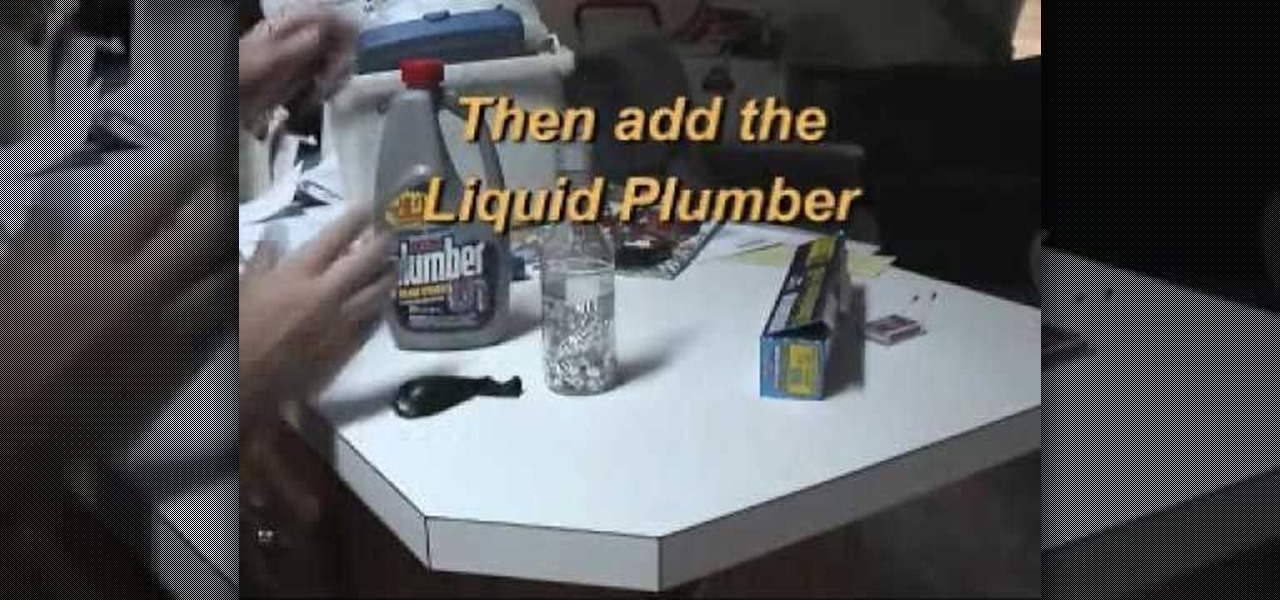
How To: Make hydrogen gas with foil and Liquid Plumr
Learn how to make hydrogen with some household chemicals and items. This experiment is dangerous, so please exercise caution. You will use Liquid Plumr for this science experiment, and be warned, Liquid Plumber and hydrogen are dangerous, maybe not the aluminum foil, but the chemicals, definitely. Fill a balloon with it and watch it explode with a close match.
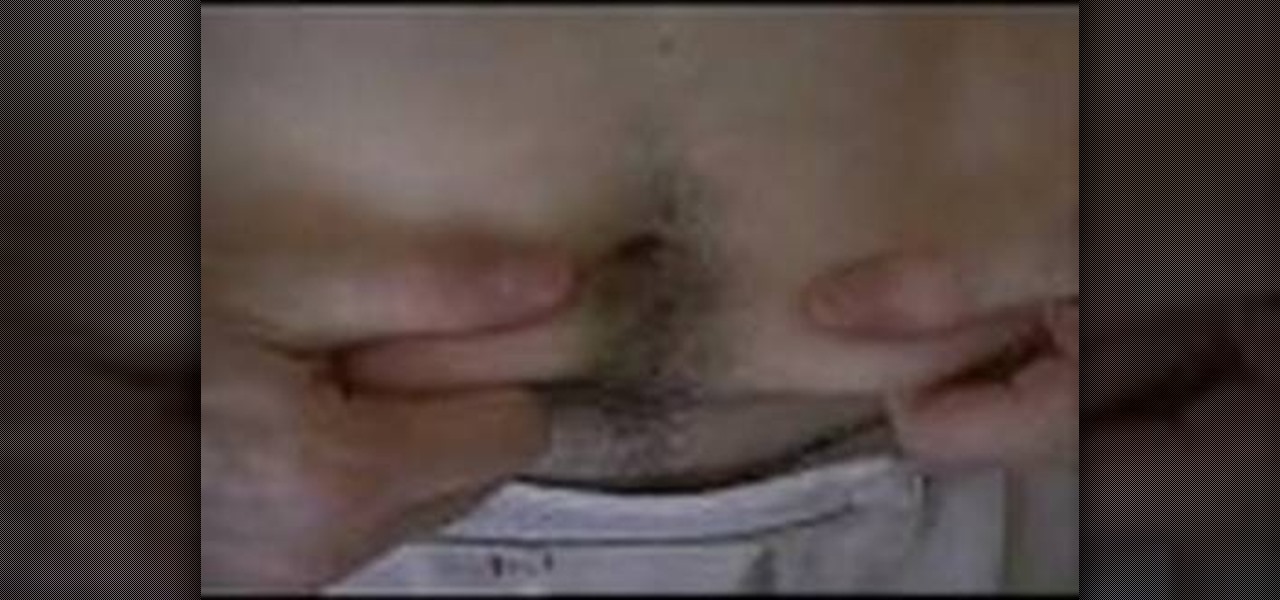
How To: Understand how body fat burning works
This is a comedic look at how body fat burning works according to our host Crazy Chris. This home video is edited together to give us some tips on how to burn fat in a pretty humorous way. Chris goes for a more goofing around and recreational approach to staying in shape rather than normal exercise. He recommends your favorite activity for 30 minutes twice a day. His happens to be swimming. Crazy Chris basically tells us to burn body fat you need to burn energy by playing sports and having fun!

How To: Improve your memory using grouping techniques
This video describes how to improve one's memory by using a grouping technique. First you break up large chunks of information into smaller chunks and then you focus and concentrate on memorizing those smaller chunks one at a time. The video then describes how short term memory work on the anatomical level. This video is about four minutes long and will help you improve your short term memory. This video is great for those who are generally forgetful.
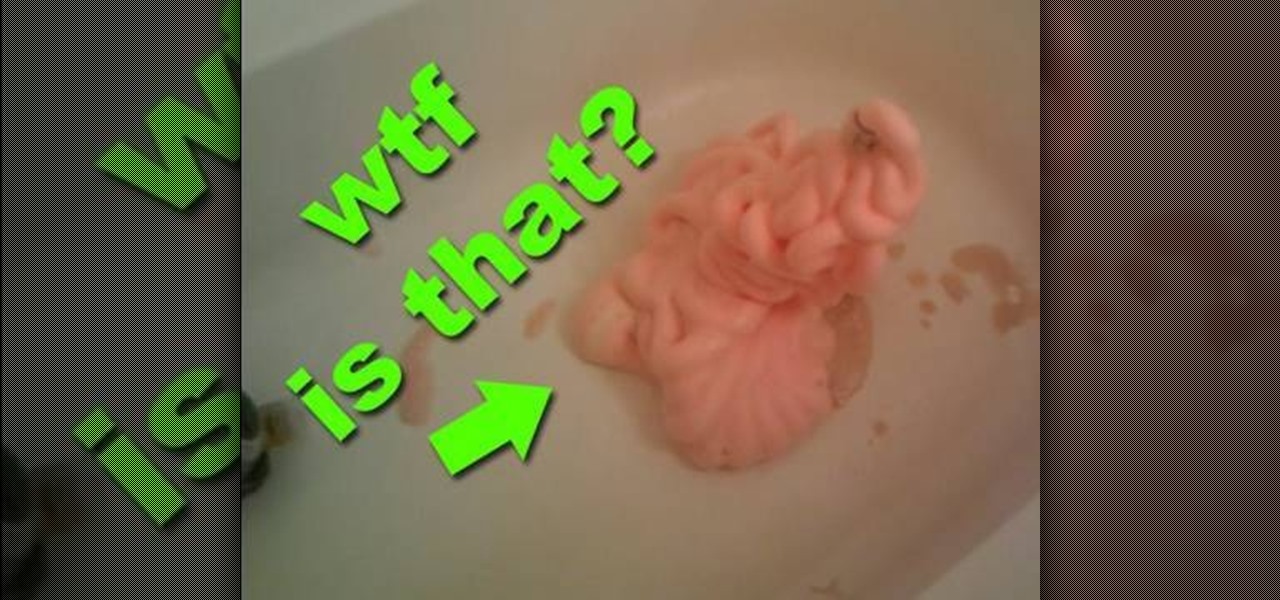
How To: Make a never ending foam snake
In this video the author shows how to make a never ending foam snake. He starts by speaking about how hydrogen peroxide can be fun. He starts with the requirements first which are a dish soap, a bottle of hydrogen peroxide, some dry yeast, and a red fruit color. Now he fills up a cup with hydrogen peroxide, adds the color and two table spoons of dish soap. Now he shows how to use yeast which is used to remove the oxygen from the hydrogen peroxide. And finally he demonstrates the never ending ...
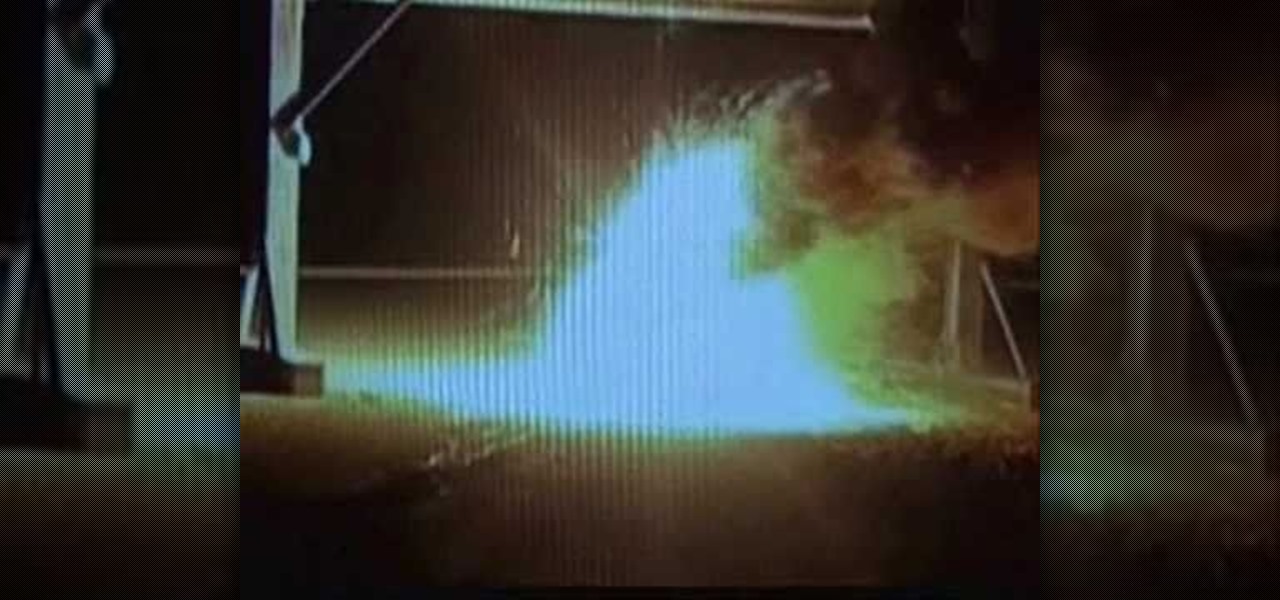
How To: Create a thermite reaction
Obtain finely powdered iron oxide (rust), aluminum, and a thin strip of magnesium. Mix them together in a 8:3 ratio (iron oxide: aluminum) in a ratio by weight. [Note that the since aluminum is so light, it will appear that it is about a 50-50 mix by volume].
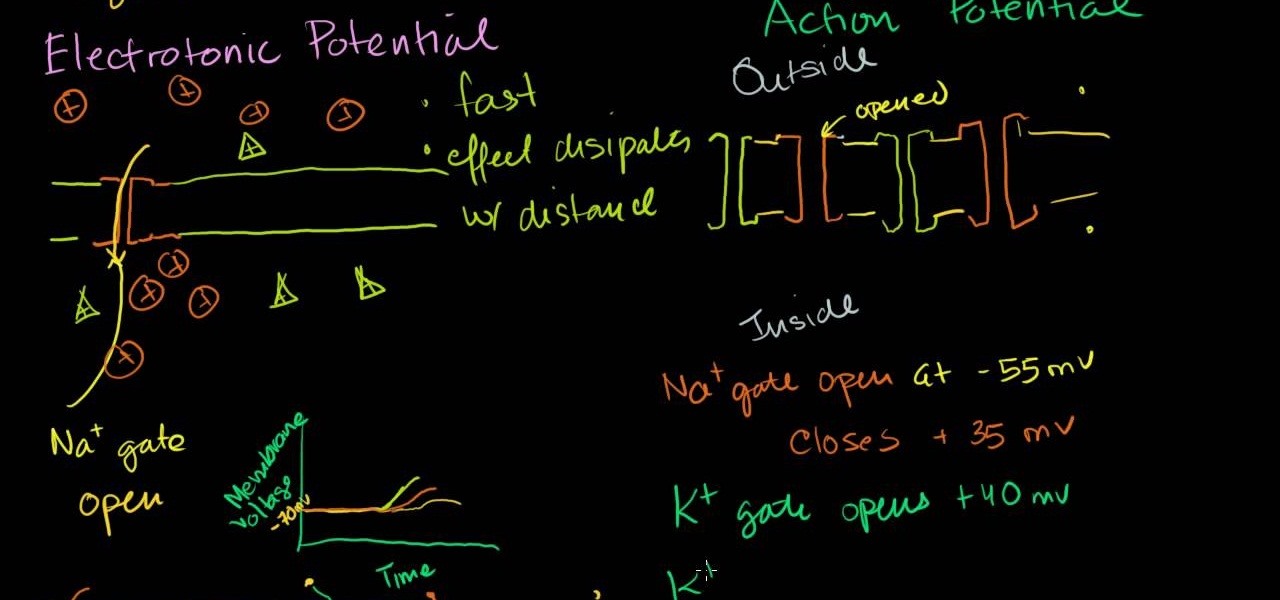
How To: Understand electrotonic & action potentials in a cell
Maybe you learn best by seeing things worked out in front of you and what you just saw in class today about Electronic action potential of neurons didn't quite sink in. Not to mention the test that you have coming up this week is going to be an in-depth analysis of your knowledge on this material. Let Khanacademy be your guide! For less than half the time it takes to sit through the Professors class, he explains the function of Neurons, how action potential works and sends you on your way to ...
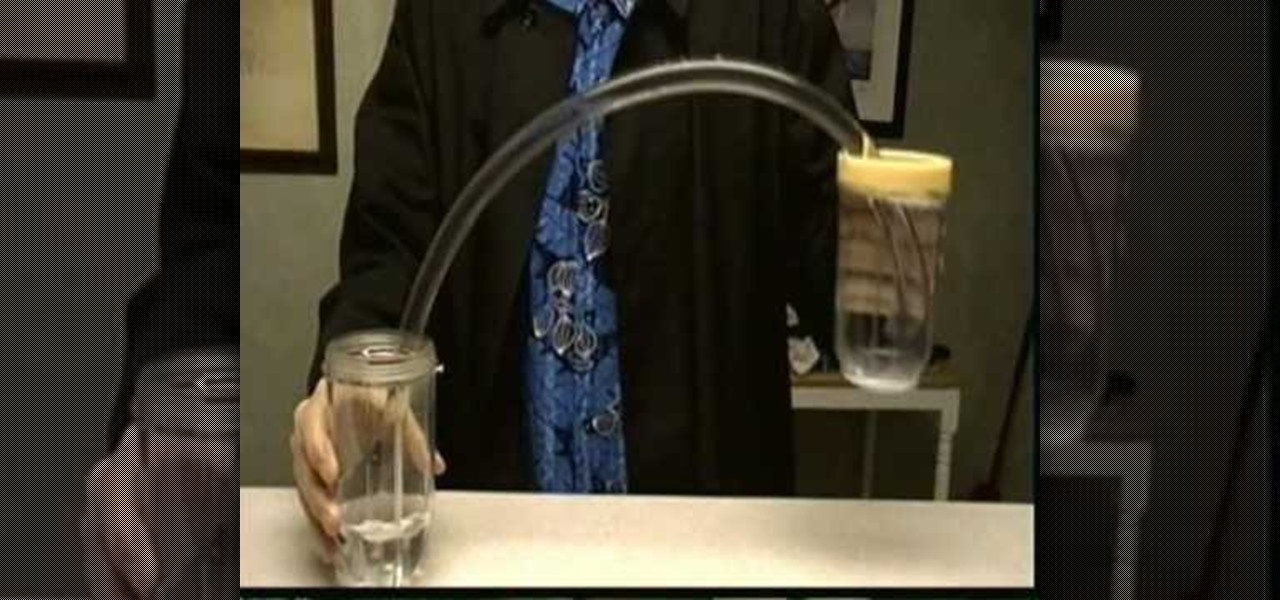
How To: Experiment with hydrostatic pressure
This how-to video explains the hydrostatic pressure.
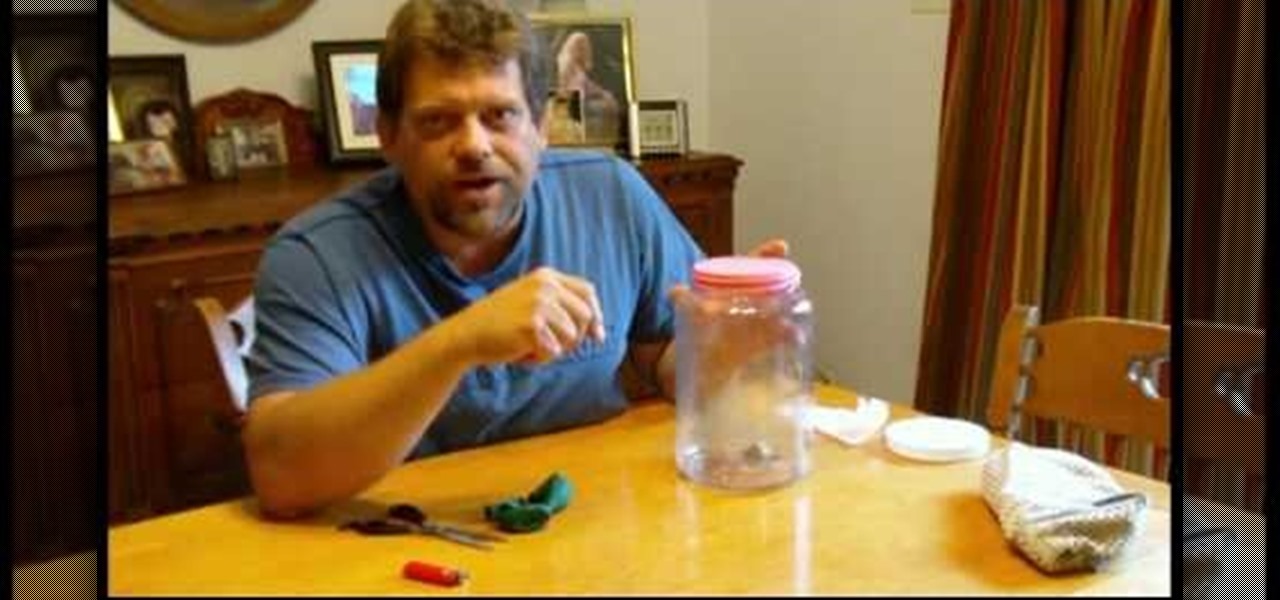
How To: Create a cloud in a clear container
Do Try This at Home brings us video on how to create a cloud in a container. With just a few simple items household items we can create a cloud. He explains to us the science behind what he is doing and why is works the way it does. After that he demonstrates how to create the cloud with quite amazing results. He easily has created a cloud and suggests that we try this at home because it much easier to see and enjoy in person.

How To: Poke holes in a bag of water while staying dry
This demonstrates the difference between hard polymers and soft polymers. The bag does not leak water as it molds to the softer polymer of the bag. If the pen had poked a harder polymer, most likely, there would have been leaking from the holes. This demonstrates characteristics of water, and how polymers can work. This also shows how certain leaks can be stopped.

How To: Pull water into a upside down container with a candle
This is an exciting video for kids of all ages! Do you know what atmospheric pressure is? You will after watching this video. Know any fancy names for water? You will after viewing this fascinating experiment. Mr. G gives you a list a supplies you will need and then he shows you how to do the experiment. The supplies are easy to obtain. You will need a lighter or matches, so adult supervision is required, but the experiment is easy to do.
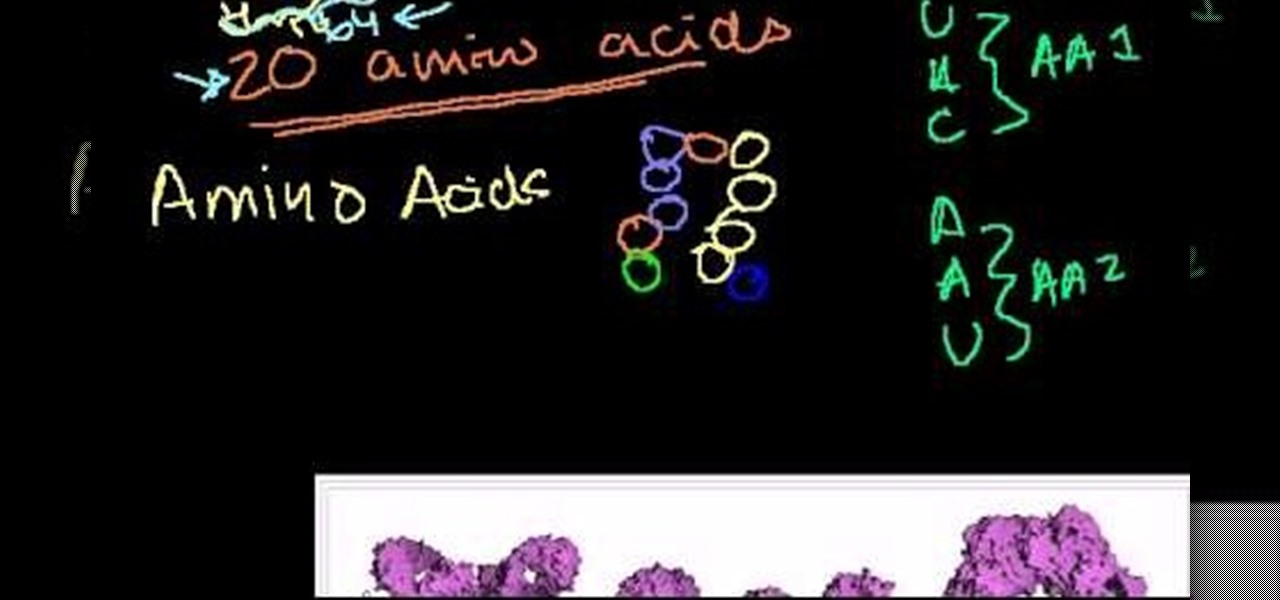
How To: Understand DNA
This video shows the details of DNA in the process of understanding their functions. The video is simple and easy to understand. The video starts with the description of the basic structure of DNA. It describes the various components of DNA. The video describes the base pairs that make up the DNA. The video describes the way these structures help to make up the human beings. The description in this video is very candid. The video describes the role of DNA in making the proteins.

News: Kick Ass at Pinball (Telekinetically)
At Germany's 2010 ceBIT Technology Fair, a company called Berlin Brain-Computer Interface demoed technology for mind controlled pinball. The game is controlled solely with brain impulses.
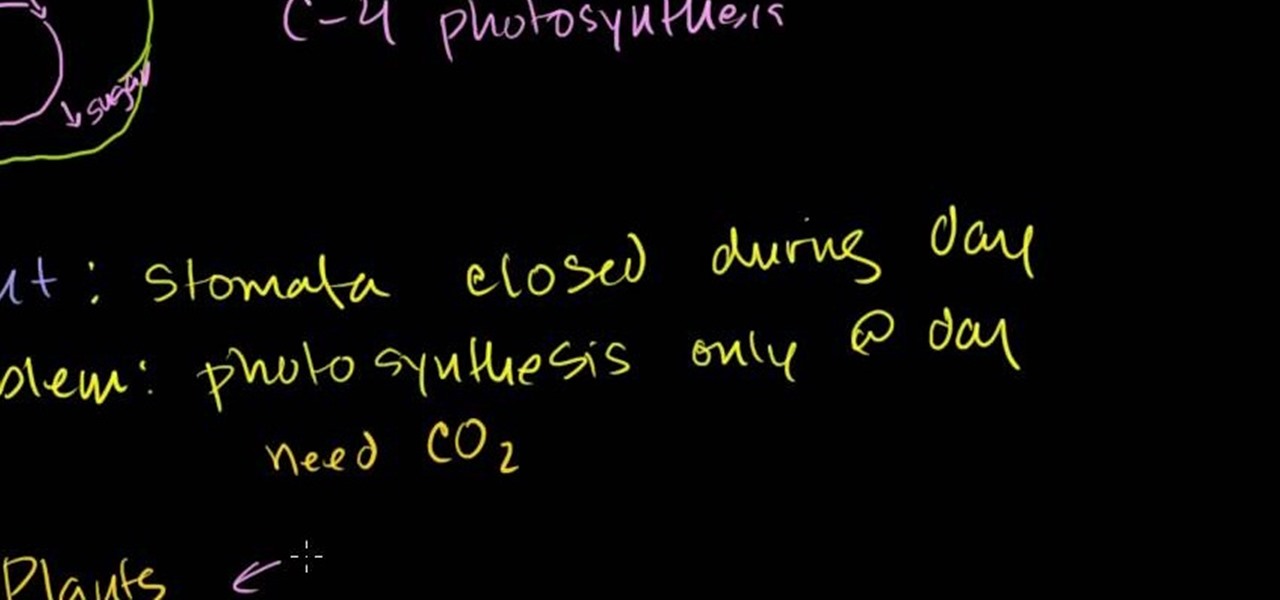
How To: Understand CAM plants
We all learn a simple description of photosynthesis in grade school but there are a lot more complicated process going on. Plants can utilize carbon at night and this description will explain a very advanced understanding of how CAM works.

How To: Find the area of a trapezoid easily
Finding the area of a trapezoid can be done easily by using a simple formula. The area can be found by adding the length of base 1 plus base 2 then multiplying by the height and then dividing the sum by 2. The bases of the trapezoid are the straight lines that are parallel to one another. The last number in the equation is total height of the trapezoid. Now all that remains left is to plug these number into the formula and find the area of your trapezoid.
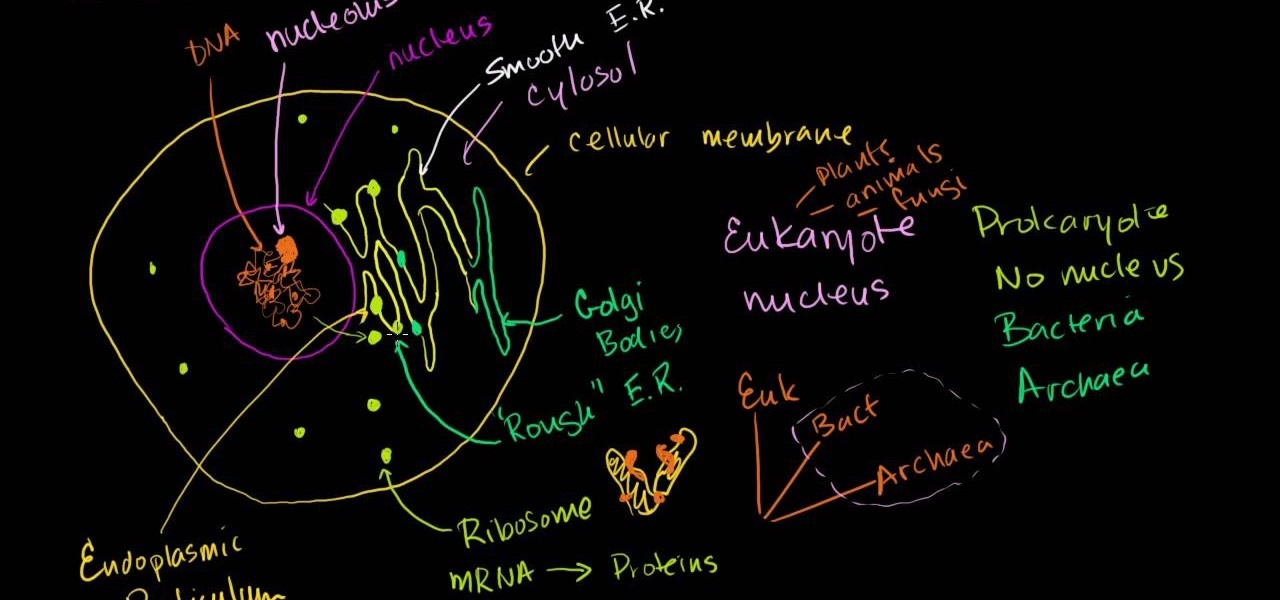
How To: Understand the structure/parts of the cell
In this video the author shows about the different parts of a biological cell. He intends to explain the parts of a cell by using a diagram and incrementally building different parts of the cell explaining them along the way. he starts with drawing the cellular membrane which is the boundary or outer cover of the cell. Now he starts with drawing the DNA which are also called as he genes of the cell. Now he draws and shows other parts of cell called eukaryotes, chromatin and also nucleus which...
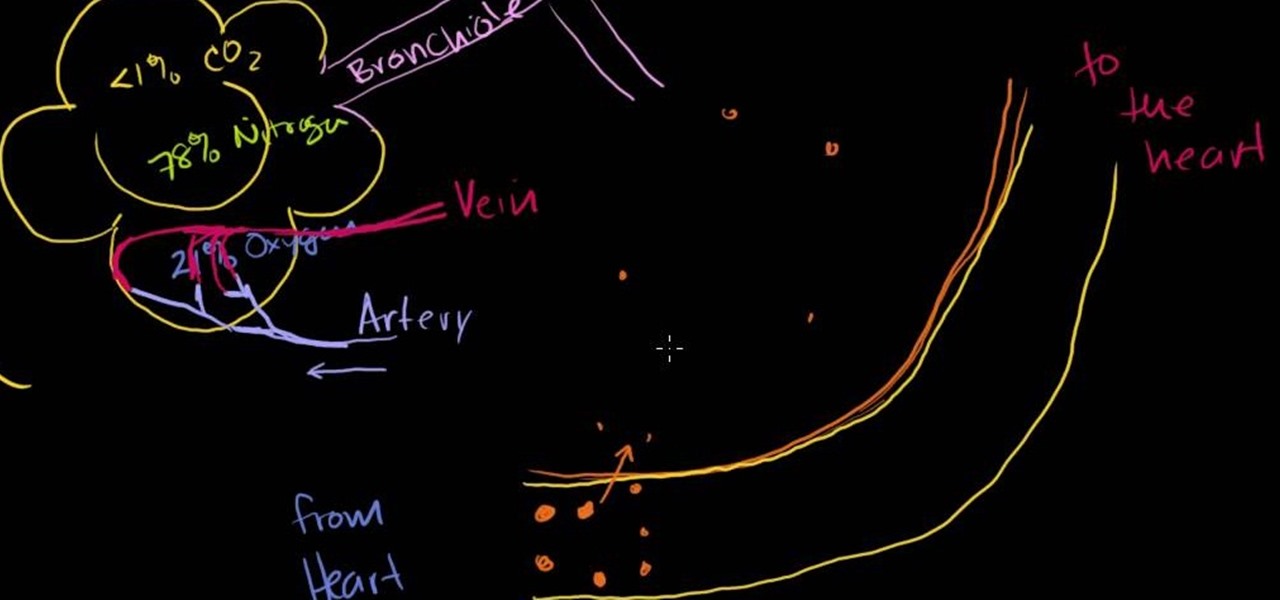
How To: Understand the red blood cells
Many people like to understand how exactly their body works. Understanding the blood will help you a lot when your doctor explains results from blood tests.
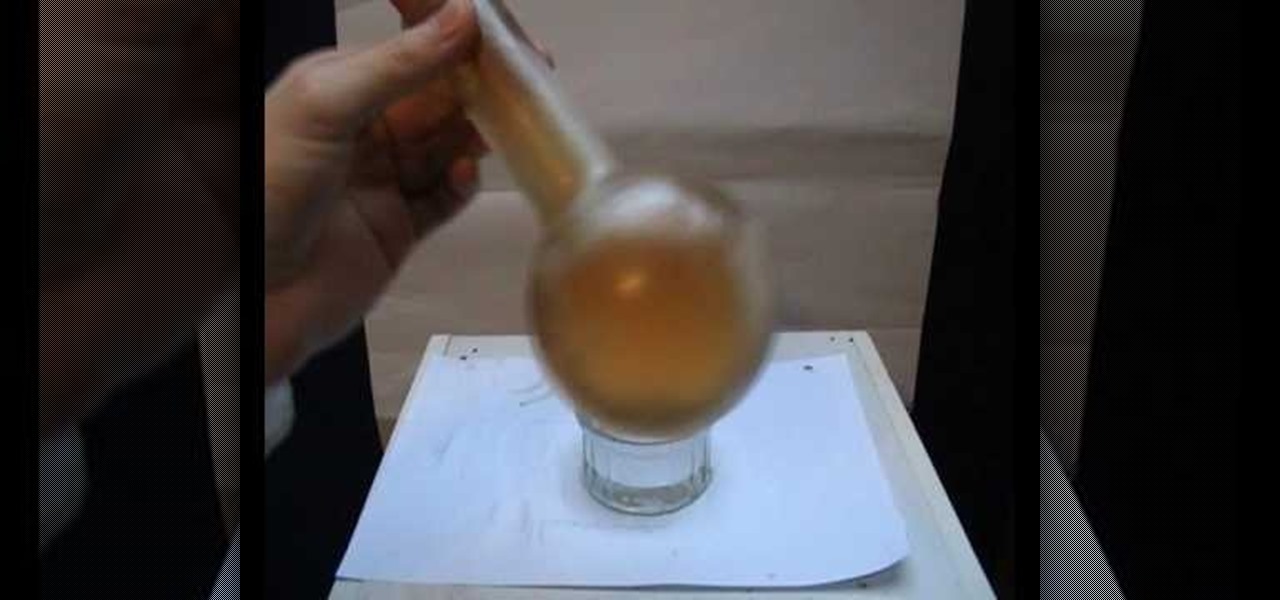
How To: Make nitrogen dioxide in the lab
Love doing science experiments? Want to impress your friends with your science skills and look good? Then you must watch this video.
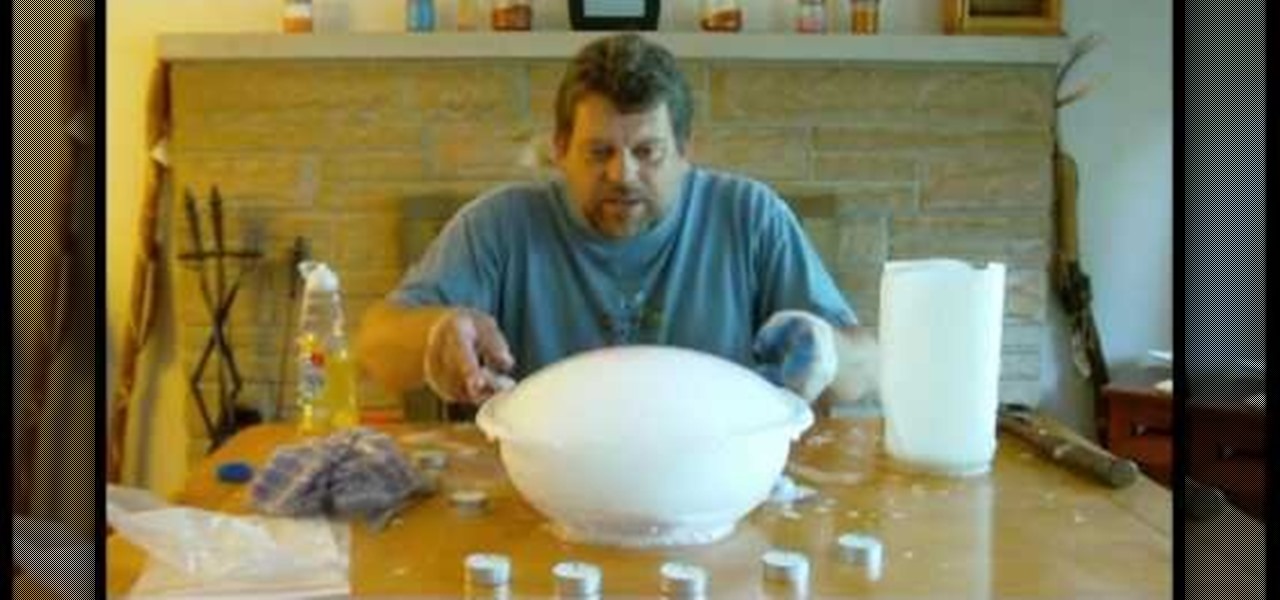
How To: Perform multiple dry ice experiments
This video shows how sublimation works. The instructor shows how to mix bubbled water, ice water and dry ice to create dry ice smoke. He is essentially making a hand made fog machine. This task must be done carefully because if the solution is isolated and concealed it will build pressure and possibly explode. Take extreme caution in doing this home experiment. The instructor also shows you how to make music spoons using temperature changes on the metal.

News: Turn Your Arm Into a Touchscreen Display
Microsoft Research and Carnegie Mellon University have teamed up to to create an armband that projects a touchscreen interface directly on to your skin. The best part? Skinput knows which part of the body you've tapped, based on the sound that's matched against skin, muscle or skeleton.
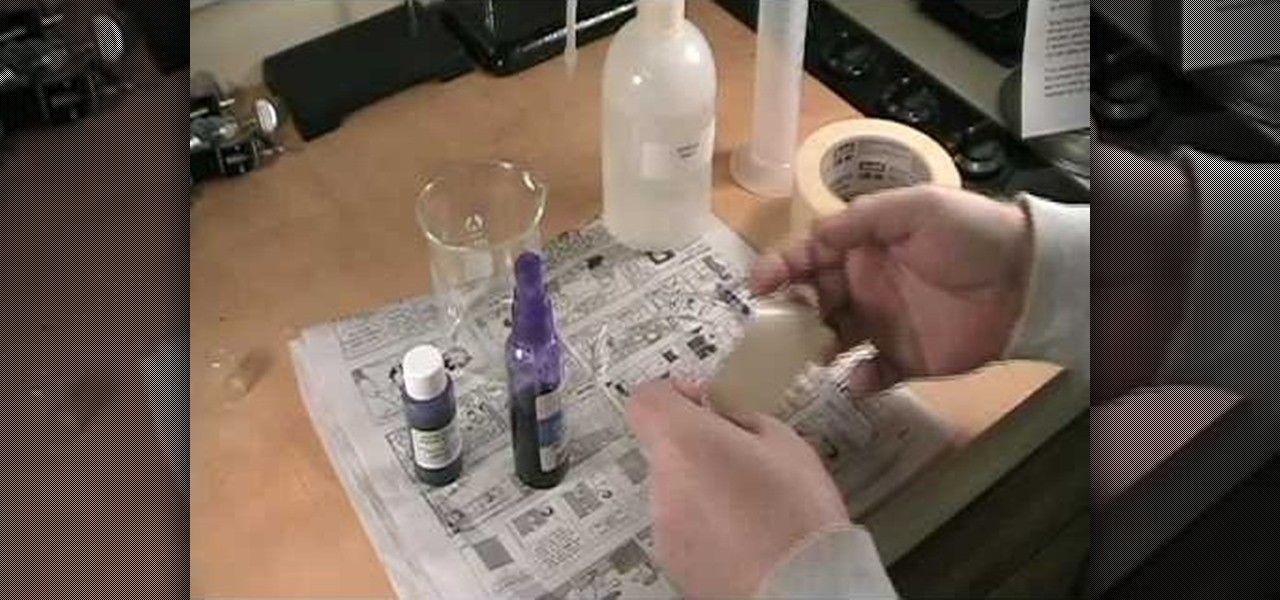
How To: Use gentian violet to reveal latent fingerprints
This video would be very interesting for those seeking careers or those interested in the field of criminal science. This field involves forensic science. The video explains to us how to use gentian violet in order reveal latent fingerprints. He explains to us the experiment he is about to do before he does it. Genetian violet is a type of dye solution that can be very helpful in retrieving fingerprints. Safety goggles and gloves should be worn at all times.
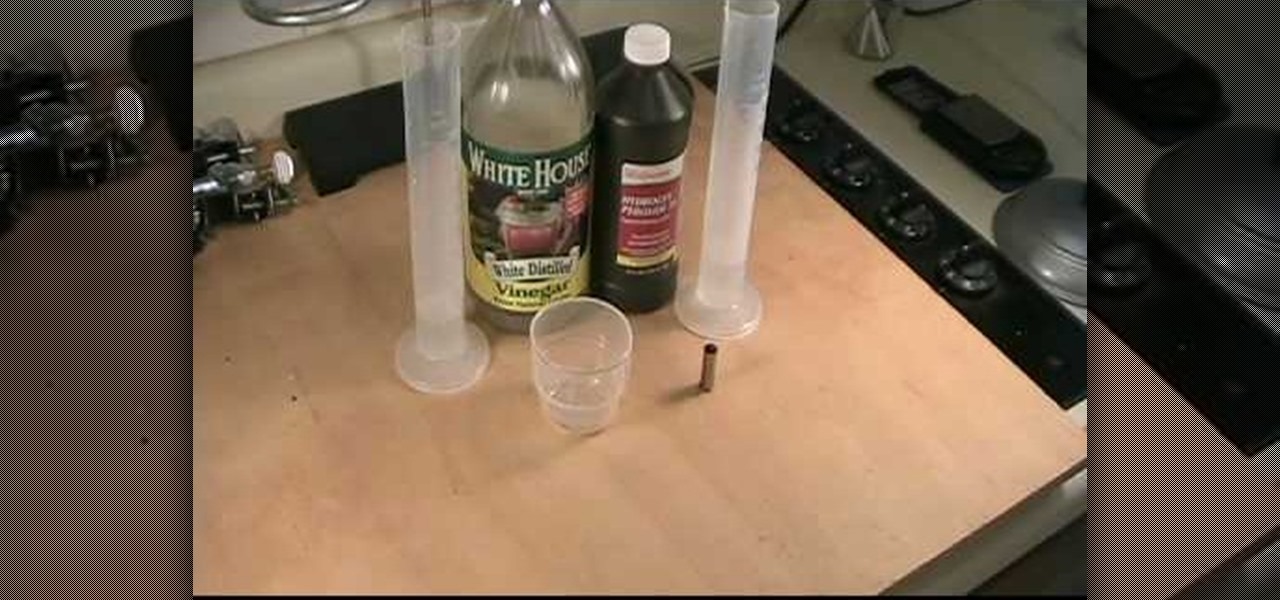
How To: Use vinegar & hydrogen peroxide to reveal fingerprints
Learn how to find latent finger prints on brass surfaces, such as fired cartridge cases. Called the Acidified Peroxide method, using only white distilled vinegar and hydrogen peroxide that you can find at your local drugstore, you can uncover fingerprints that is usually impossible to see using other methods. After mixing the vinegar and hydrogen peroxide the solution should start turning a greenish color around the brass object after 5 to 10 minutes. After you see the green color throw away ...
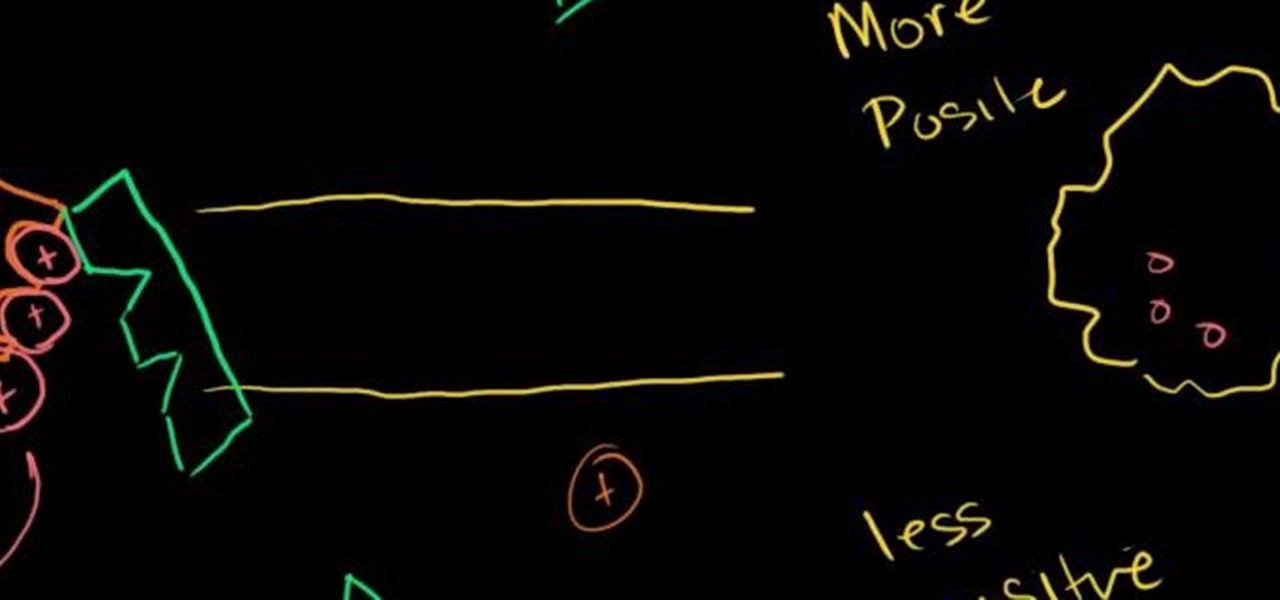
How To: Use a sodium potassium pump
This is a great video presentation of how Sodium Potassium Pump can maintain a voltage gradient across a cell. It also discusses various things like the differences between positive and negative charges and positive and less positive charges etc. The video tries to explain a lot of things happen within a cell when you fluctuate the voltage of sodium as well as positive and negative ions within a cell. You must watch it yourself to see the changes happen within a cell when you make some changes.

How To: Make water defy the laws of nature
Looking to impress your friends with some cool tricks? Why not trying to make water defy the laws of nature?
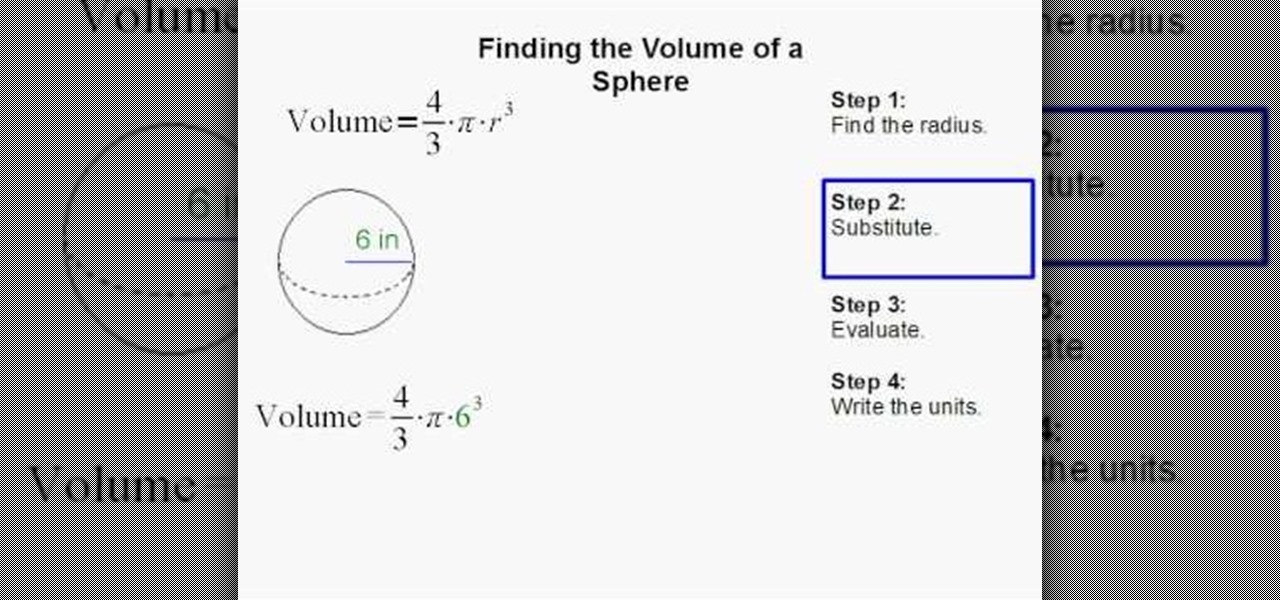
How To: Find the volume of a sphere
In this video the author show how to find the volume of a sphere. The formula for finding the volume of a sphere is 4/3 * Pi * r*r*r, where r is the radius of the sphere. Now to compute the volume of a sphere you have to note down the radius of the sphere and substitute it in the above formula along with the other substitutions. The author shows this with an example by taking a sphere of some radius and calculating its volume. To find out how to calculate the volume of a sphere watch this vid...
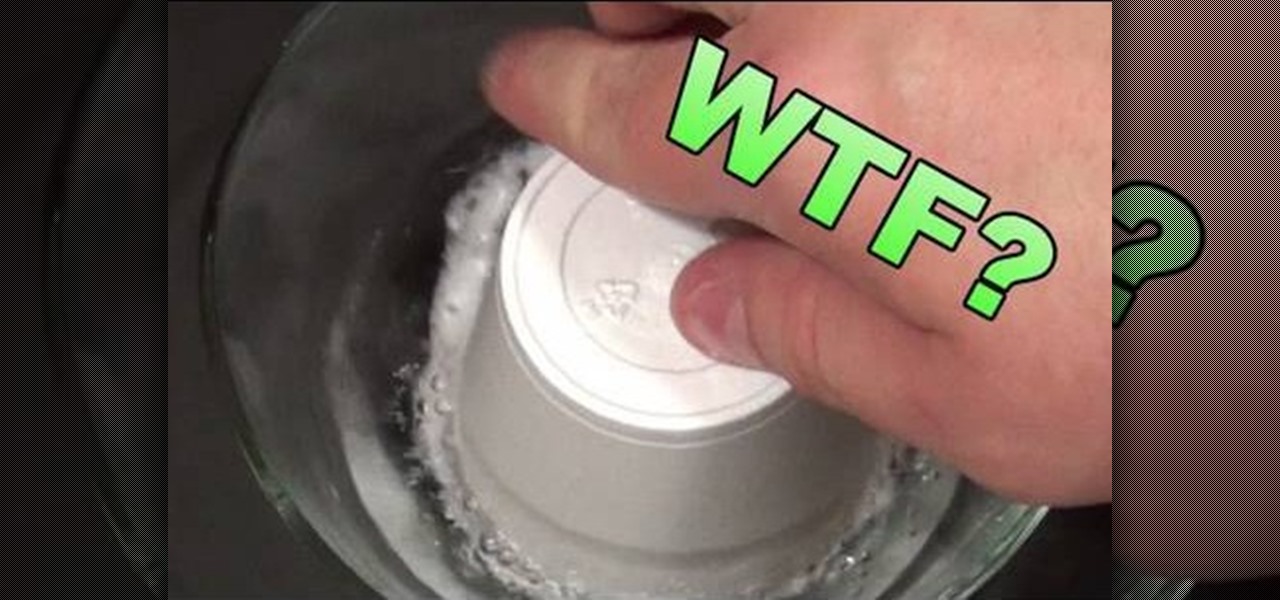
How To: Melt Styrofoam with nail polish remover
This short video is about melting a styro cup without fire. It's magical. Anyone watching it would wonder what had happened to the Styrofoam cup which was dipped in Acetone, nothing but common nail polish remover. This is a short and cute video and watching this could be fun for kids. The fun element comes at the later part of the video. This would kindle the interest of kids in trying out the reaction of different substances in various solvents.
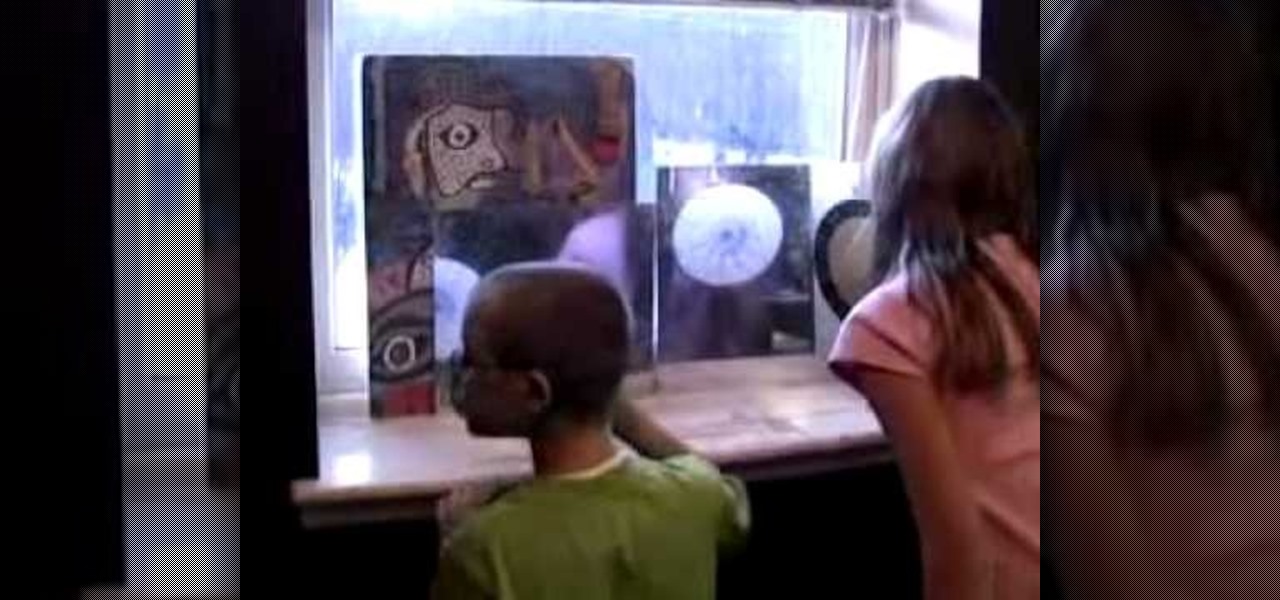
How To: Build a movie wheel
Have you ever wondered how movies are made? There are many modern techniques available today to produce movies. This was not the scenario centuries back when there were no movies or films. The earliest form was the movie wheel and this video teaches you exactly how to build a movie wheel. The video is simple and instructive which even an elementary school kid will be able to understand. You can use this for your school science projects. This is one tutorial which will leave everyone spinning.
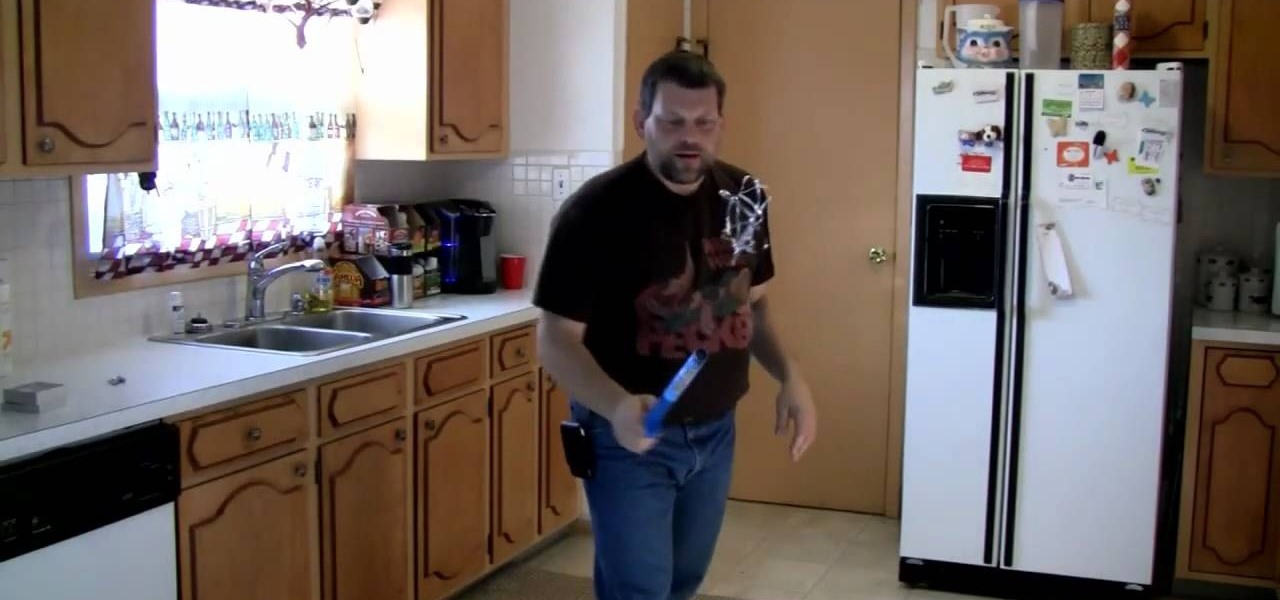
How To: Make sodium acetate ("hot ice") in your kitchen
The Mr.G Show presents how to make "hot ice" more commonly known as sodium acetate in the kitchen. You start with one liter of white vinegar which you place into a sauce pan. You add four table spoons of baking soda to the pan being very careful because both chemical together will react an may cause a big mess so be prepared to clean up any boil over that may arise. Wait while this mixture boils down for the real fun to starts. The hot ice created will transform from a liquid to a solid befor...



